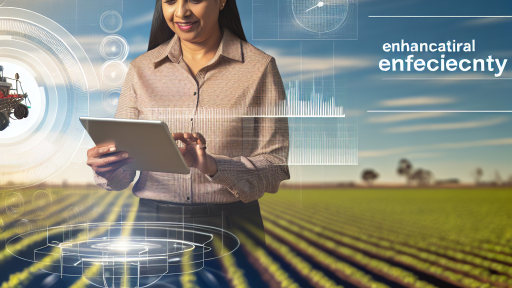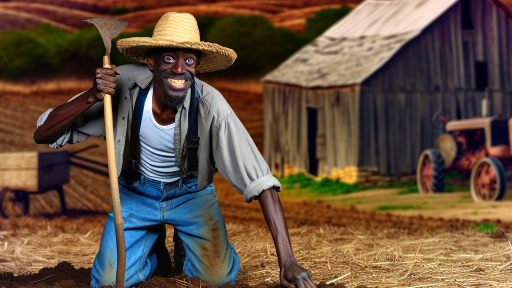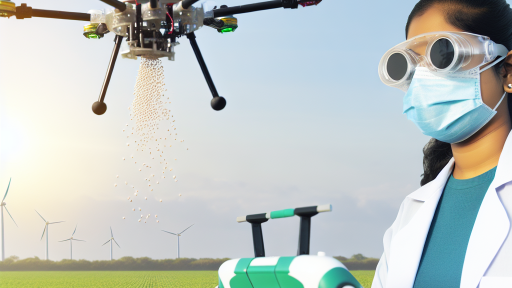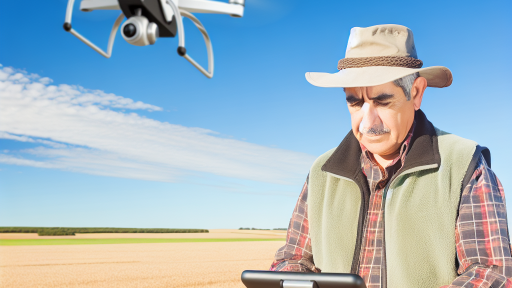Introduction to AI in Agriculture
Artificial intelligence (AI) is transforming agriculture in numerous ways.
It enables farmers to enhance their productivity and efficiency.
AI solutions are particularly vital for pest and disease management.
Overview of Pest and Disease Management
Pest and disease management is crucial for agricultural success.
Effective management helps protect crops from harmful organisms.
This process reduces yield loss and improves food security.
The Role of AI in Pest Detection
AI technologies facilitate early detection of pests and diseases.
Machine learning algorithms analyze images of crops for signs of infestation.
This leads to timely interventions and mitigated losses.
Data-Driven Decision Making
AI utilizes large datasets to inform management practices.
Farmers can optimize their spraying schedules based on AI insights.
This approach minimizes pesticide use and enhances sustainability.
Integrating AI with Precision Agriculture
Precision agriculture leverages AI for targeted treatment applications.
Farmers can apply interventions only where needed, saving resources.
Additionally, this integration increases crop resilience overall.
Transform Your Agribusiness
Unlock your farm's potential with expert advice tailored to your needs. Get actionable steps that drive real results.
Get StartedFuture Trends in AI for Crop Protection
The future of AI in pest and disease management looks promising.
Continuous advancements will improve predictive analytics.
Farmers will increasingly rely on AI for sustainable practices and decisions.
Understanding Common Agricultural Pests and Diseases
Types of Agricultural Pests
Agricultural pests pose serious threats to crops.
They often include insects, rodents, and weeds.
Insects such as aphids and locusts can devastate fields.
Rodents like mice and rats can consume and damage stored grains.
Weeds compete with crops for nutrients and water.
Farmers must recognize and identify these pests promptly.
Types of Agricultural Diseases
Agricultural diseases affect plants and livestock significantly.
Fungal infections such as rust and blight are common.
Bacterial diseases can lead to decay and poor harvests.
Viruses can severely limit the growth potential of plants.
Farmers need to monitor their crops for any signs of diseases.
Impact of Pests and Diseases on Agriculture
Pests and diseases lead to substantial crop losses.
They can reduce yield quality and quantity.
This, in turn, affects market prices and farmer income.
Furthermore, the use of chemicals increases production costs.
Some pests also develop resistance to pesticides over time.
Consequently, farmers must adopt integrated pest management strategies.
Preventive Measures
Preventive measures can help reduce pest and disease impact.
Crop rotation can disrupt pest life cycles effectively.
Fit selection of resistant plant varieties plays a crucial role.
Regular field monitoring can catch issues early.
Showcase Your Farming Business
Publish your professional farming services profile on our blog for a one-time fee of $200 and reach a dedicated audience of farmers and agribusiness owners.
Publish Your ProfileMoreover, maintaining healthy soil supports plant resilience.
Role of AI in Monitoring Pest and Disease Outbreaks
Introduction to AI Technologies
Artificial intelligence plays a pivotal role in agriculture today.
It transforms how farmers monitor crops for pests and diseases.
Specifically, AI enhances accuracy and efficiency in detection.
AI-Driven Imaging Technologies
Imaging technologies, powered by AI, are crucial for monitoring health.
Drones equipped with high-resolution cameras capture detailed images.
These images help identify problem areas quickly and effectively.
Furthermore, thermal imaging detects stressed plants, indicating potential issues.
Data Analytics and Predictive Models
Data analytics utilizes vast amounts of data for insights.
AI algorithms analyze historical data to predict pest outbreaks.
This proactive approach allows farmers to take timely action.
Machine learning models improve predictions over time with more data.
Integration with IoT Devices
Internet of Things (IoT) devices offer real-time monitoring solutions.
Sensors collect data about environmental conditions and plant health.
AI processes this data, identifying threats like pests or diseases.
Alerts and recommendations help farmers respond swiftly to issues.
Importance of Mobile Applications
Mobile applications make AI accessible to farmers everywhere.
These apps provide real-time insights and recommendations on pest control.
Farmers can upload photos of crops for analysis and immediate feedback.
This user-friendly technology bridges the gap between expertise and practice.
Collaborative Efforts and Future Directions
Collaboration among tech companies and agronomists drives innovation.
Research institutes continually test and develop new AI solutions.
The future of pest management relies on ever-evolving AI technologies.
Such innovations promise to enhance food security worldwide.
Uncover the Details: The Future Of Precision Farming Through Biotechnology
Data Collection Methods for AI Solutions
Sensors
Sensors play a crucial role in pest and disease management.
They gather real-time data from crops and soil.
This information helps in early detection of issues.
Common sensor types include temperature, humidity, and soil moisture sensors.
These sensors provide actionable insights to farmers.
They can also trigger alerts based on predefined thresholds.
By utilizing sensors, farmers can enhance crop health monitoring.
This leads to improved yield and reduced losses.
Drones
Drones have transformed agricultural practices significantly.
They offer aerial surveillance for large areas.
This capability enables farmers to assess crop health accurately.
Drones capture high-resolution images of fields.
These images help identify pest infestations early.
Furthermore, drones can spray pesticides efficiently.
This approach minimizes chemical use and reduces costs.
Showcase Your Farming Business
Publish your professional farming services profile on our blog for a one-time fee of $200 and reach a dedicated audience of farmers and agribusiness owners.
Publish Your ProfileFarmers can program drones for specific routes, enhancing efficiency.
IoT Integration
The Internet of Things (IoT) enhances data collection methods.
IoT devices connect various sensors and systems seamlessly.
This integration allows for centralized data management.
Farmers can monitor crops remotely and in real-time.
Data collected through IoT devices aids in predictive analytics.
This capability enables proactive pest and disease prevention.
Additionally, IoT improves resource allocation in farming operations.
It helps in optimizing water usage for irrigation.
Benefits of Data Collection
Effective data collection methods lead to multiple benefits.
They improve decision-making processes for farmers.
Farmers can address potential issues before they escalate.
This approach enhances overall crop management productivity.
Moreover, it promotes sustainable practices in agriculture.
By reducing pesticide usage, the environment benefits significantly.
Ultimately, data-driven insights lead to healthier food systems.
Discover More: Blockchain Technology And Its Impact On Farming Supply Chains
Machine Learning Algorithms for Predictive Analysis
Understanding Predictive Analysis
Predictive analysis uses historical data to forecast future events.
This process relies on advanced algorithms and statistical techniques.
Machine learning enhances predictive analysis significantly.
It identifies patterns that humans might miss.
AI Anticipation of Outbreaks
AI systems help predict pest and disease outbreaks efficiently.
They utilize vast amounts of agricultural data.
Furthermore, they analyze environmental factors as well.
This enables timely intervention to prevent damage.
Data Collection and Processing
Collecting data is crucial for effective predictive modeling.
Farmers and researchers gather data from various sources.
These include weather stations, satellite imagery, and field reports.
Processing this data helps to create reliable models.
Algorithm Selection
Selecting the right machine learning algorithm is essential.
Common algorithms include decision trees, random forests, and neural networks.
Each algorithm has its unique advantages and use cases.
Therefore, farmers must understand their specific needs.
Benefits of Predictive Analysis in Agriculture
Predictive analysis offers numerous advantages for farming.
Initially, it reduces chemical pesticide usage.
It allows for targeted application when necessary.
Additionally, this approach protects beneficial insects.
Farmers can optimize their resource allocation effectively.
Enhanced Decision-Making
With predictive analysis, farmers make informed decisions.
They can act proactively rather than reactively.
Showcase Your Farming Business
Publish your professional farming services profile on our blog for a one-time fee of $200 and reach a dedicated audience of farmers and agribusiness owners.
Publish Your ProfileThis emphasizes prevention over cure in pest management.
Real-World Applications
Several agricultural sectors successfully implement predictive analysis.
Crops such as corn and soybeans benefit from AI-driven insights.
These applications help in managing pests like aphids and beetles.
For instance, some farms leverage machine learning to adjust planting schedules.
Future Trends in AI and Agriculture
The future of AI in agriculture looks promising.
As technology evolves, predictive analysis will become more accurate.
Moreover, integration with IoT devices will enhance data collection.
This integration will create a more responsive farming environment.
Ultimately, AI will revolutionize pest and disease management.
Gain More Insights: Automated Irrigation Systems Ensuring Water Efficiency in Farming
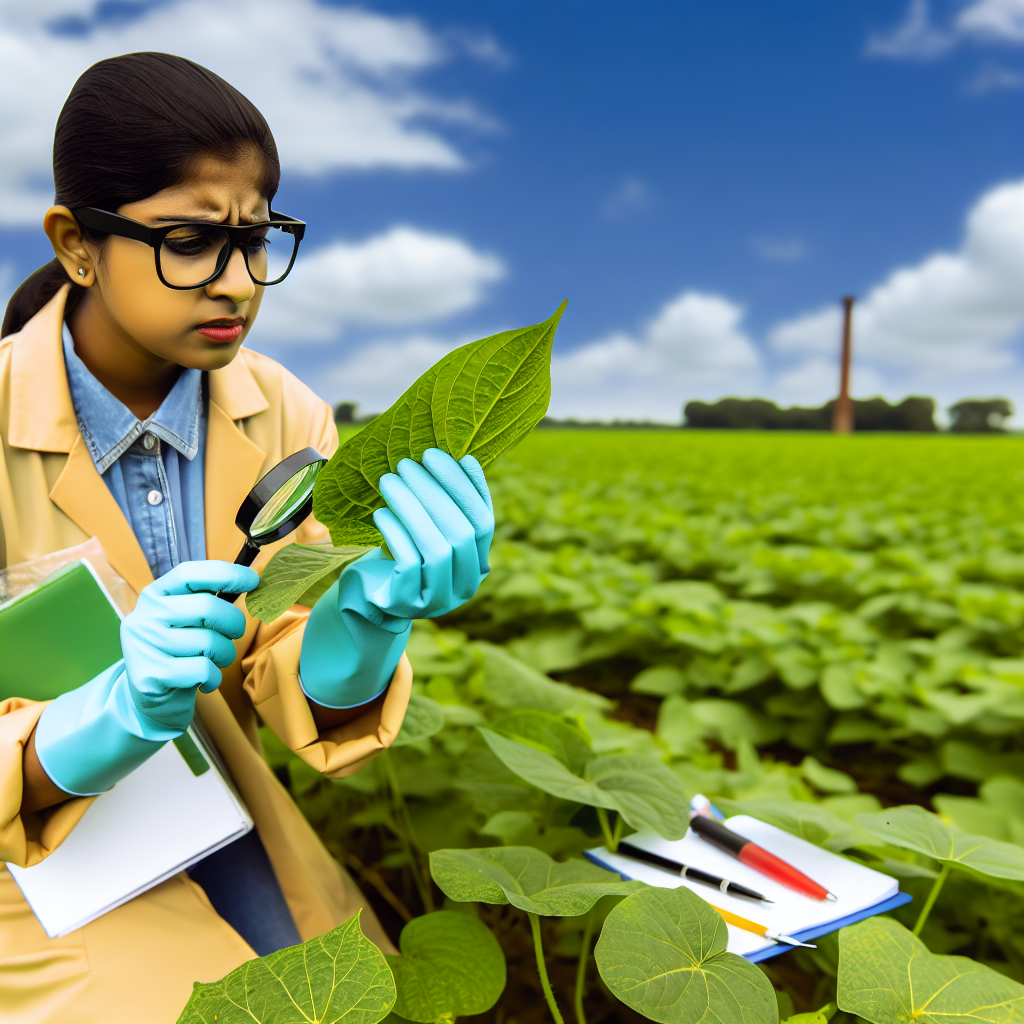
Case Studies: Successful Implementations of AI in Pest and Disease Control
AI-Driven Monitoring Systems
Many farms now utilize AI-driven monitoring systems for pest detection.
This technology integrates satellite imagery and ground sensors seamlessly.
For instance, GreenField Farms adopted AI-based surveillance for their crops.
They reported a 30% reduction in pest damage within one season.
Furthermore, this approach allowed them to target interventions precisely.
Predictive Analytics for Disease Management
Predictive analytics provides valuable insights for managing crop diseases effectively.
Agriculture Analytics Corp developed a model to forecast disease outbreaks.
They leveraged weather patterns and historical data to make predictions.
As a result, farms utilizing their services reduced crop losses by 25%.
This proactive strategy has changed conventional farming approaches significantly.
Robotic Pest Control Solutions
Robotic technology is transforming pest control systems on farms.
AgriBotics introduced automated robots targeting specific pest species.
These robots use AI to identify and eliminate pests efficiently.
One pilot program reported a 50% decrease in pesticide usage.
This innovation supports both sustainability and crop yield improvement.
Integrating AI with Traditional Methods
Farmers can combine AI solutions with traditional pest management tactics.
EcoAgri, a small innovation company, promotes this hybrid approach effectively.
They assist farmers in implementing integrated pest management (IPM) strategies.
With their guidance, agriculture operations see improved pest control outcomes.
This synergy balances technology with natural farming practices.
Uncover the Details: Biotechnology Tools Every Modern Farmer Should Know
Challenges and Limitations of AI Solutions in Agricultural Practices
Technological Barriers
Implementing AI solutions often requires significant technological infrastructure.
This infrastructure can be lacking in rural farming areas.
Furthermore, the cost of high-tech equipment can be prohibitive.
Additionally, farmers may lack technical skills to operate new technologies.
Data Dependency
AI solutions rely heavily on data for effective functioning.
However, collecting accurate data can pose challenges.
Data integration from various sources can be complex and time-consuming.
In some cases, data may be insufficient to train AI systems accurately.
Showcase Your Farming Business
Publish your professional farming services profile on our blog for a one-time fee of $200 and reach a dedicated audience of farmers and agribusiness owners.
Publish Your ProfileVariability of Agricultural Conditions
Agricultural conditions vary widely across regions and seasons.
This variability complicates the development of universal AI models.
Local pests and diseases may require tailored solutions.
Thus, one-size-fits-all approaches often fail to deliver results.
Regulatory and Ethical Concerns
AI applications must adhere to strict agricultural regulations.
Compliance can be a challenging process for farmers.
Additionally, ethical concerns about data privacy persist.
Farmers must ensure that their data is used responsibly.
Resistance to Change
Many farmers are hesitant to adopt new technologies.
This resistance can stem from a lack of understanding of AI benefits.
Moreover, traditional farming practices are deeply rooted in culture.
Changing these practices requires effort and education.
Future Trends in AI for Agriculture
Innovative Technologies
AI-driven technologies reshape agriculture by enhancing pest and disease management.
These innovations provide farmers with real-time data and insights.
For example, drones equipped with AI can monitor crop health effectively.
Additionally, machine learning algorithms analyze vast data to predict outbreaks.
Such tools enable farmers to take proactive measures, reducing crop losses.
Precision Agriculture
Precision agriculture is becoming mainstream, leveraging AI for better resource management.
This approach uses data analytics to optimize pest control methods.
Furthermore, it reduces chemical input while maintaining crop yields.
Farmers now utilize IoT devices to collect data from the field continuously.
These devices communicate with AI systems to provide detailed recommendations.
Research Directions
Ongoing research focuses on integrating AI with genetic engineering.
This combination aims to develop pest-resistant crop varieties.
Researchers are also exploring the use of AI for soil health assessment.
Such assessments can lead to tailored nutrient management strategies.
Additionally, studies are underway to create more resilient agricultural systems.
Collaboration and Investment
Collaboration between tech companies and farmers is crucial.
Investments in AI technology can drive significant advancements in agriculture.
Partnerships can help develop targeted solutions for specific regions.
Moreover, governments can support innovation through grants and subsidies.
Ultimately, the futures of AI and agriculture depend on synergistic efforts.
Additional Resources
Understanding the potential applications of Artificial Intelligence in …

